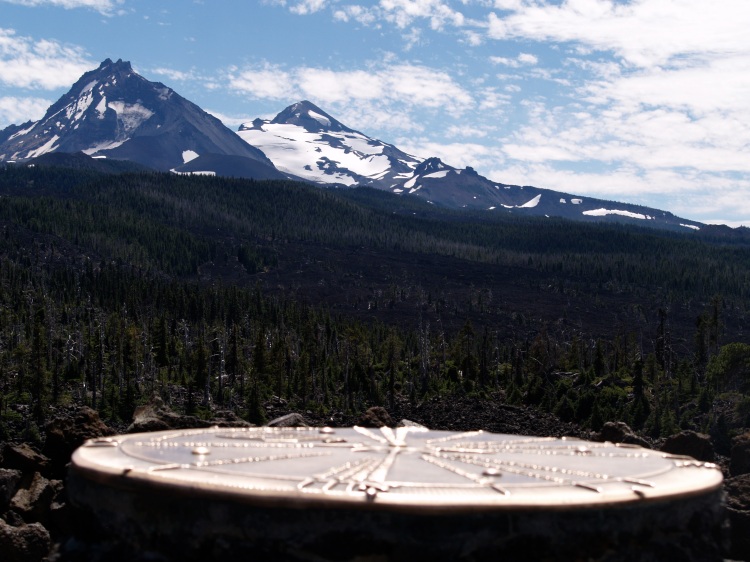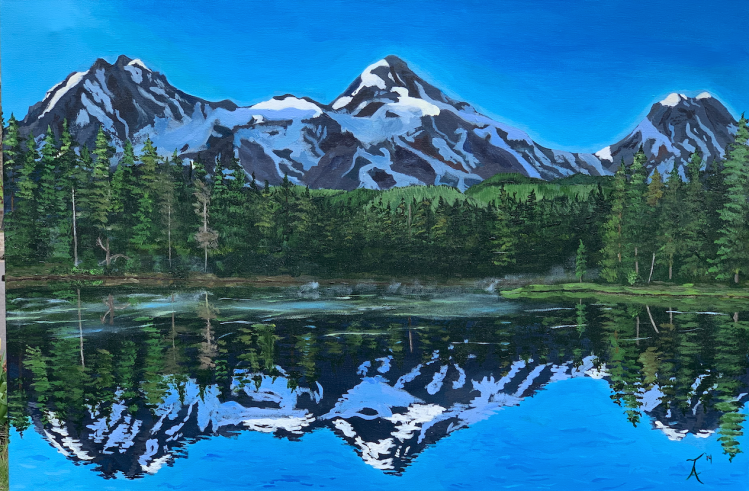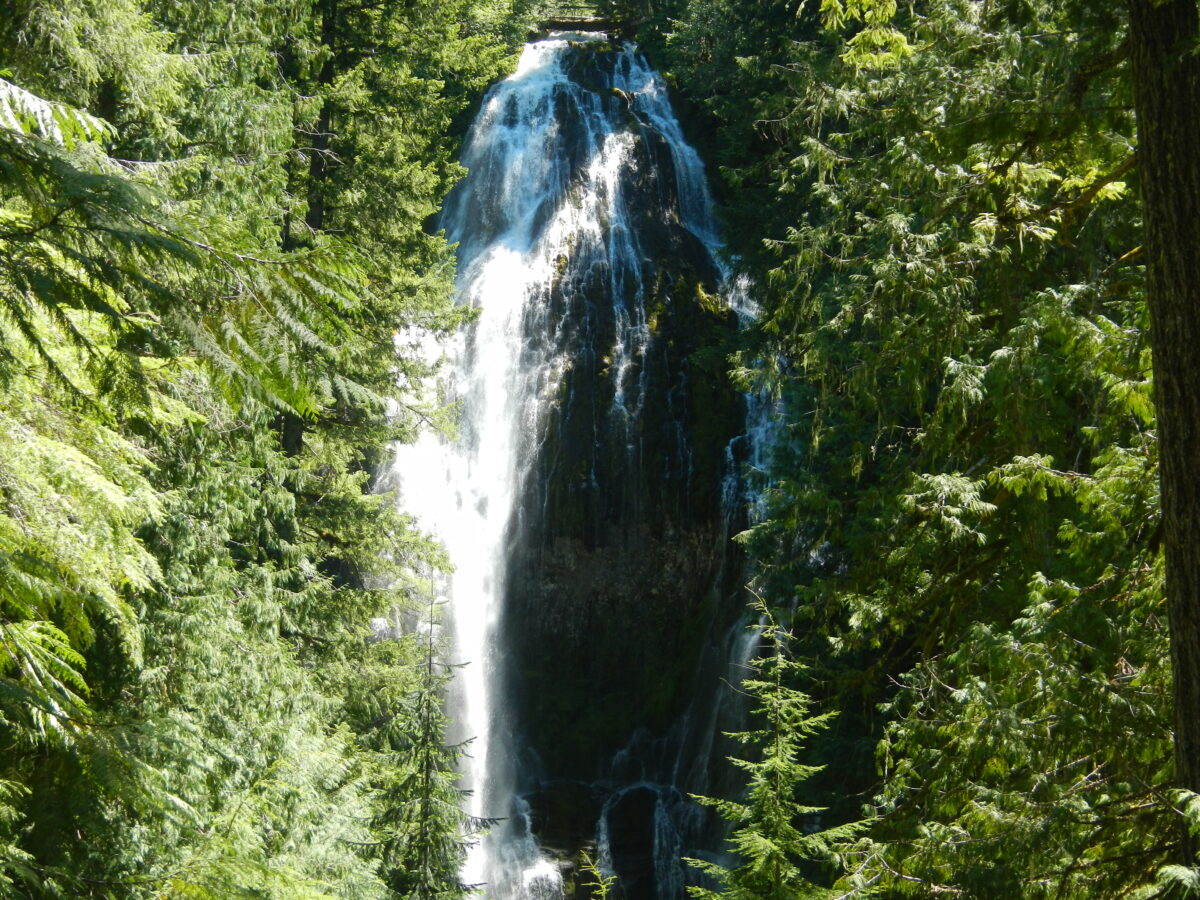Looking for 2022 Updates? Find them here.
April 6th is a new holiday in Oregon: Hiking Permit Day! Here is a quick link to day use hikes and information about overnight trips. Starting at 7am on Tuesday, April 6th, 2021 you can ensure your place on Oregon’s wilderness trails between Memorial Day and the end of September. Although some permits will be saved for last minute trips, this expanded system works much like making a dinner reservation, except instead of palatable bites, you will have breathtaking views unencumbered by the crowds.
Our Together Anywhere Driving Tours covers this new change in depth on our tour along the McKenzie Scenic Highway 242. However, as this drive is only open June-November each year, we have provided excerpts from our tour here in this blog post so you can understand a bit about the need for this massive change to the Oregon hiking landscape.
The map below links to sites featured in our driving tours around the state.
The black pins on the map locate the general area of the new hiking permit regulations.
Let’s set the stage for this wild area… imagine yourself curving up Dead Horse Grade in your Suburu (or other outdoorsy vehicle), catching glimpses of sun rays poking through the thick forest and smelling the recent rain mixed with Douglas firs from your half-down window. You are smiling, of course, because you know you are driving towards your favorite place: an adventure to the mountains of some of Oregon’s most pristine wilderness. And better yet, you are even more intrigued as you listen to these stories on your way, connecting you to the area as you travel towards your destination. You are not only immersed in the nature, you are connected to the history, the ancestors, and of course, you feel super intelligent because you also now understand why the expanded permit system is necessary.
By taking our tours you can have location based narration on your drive to the trail like the audio excerpt above.
One of the few hikes that does not require a permit on McKenzie Pass is Proxy Falls. Up the road from there is Alder Springs Campground, offering a rustic, tent only and free campground with just six sites!
Across the road from the campground is the trailhead to Linton Lake, a 1.9 mile trail to a beautiful destination with difficult to access but stunning waterfalls dropping into Linton Creek. Starting in 2021, only two overnight group permits will be offered for this site between Memorial Day and the last Friday in September each night.
In the 21st century, there is a new struggle facing this wilderness: overuse. The 1964 Wilderness Act made a first stand against overuse and protected these areas as places “where the earth and community of life are untrammeled by man.” Like national parks, wilderness areas are federally protected natural areas where motorized and mechanical travel is strictly controlled to ensure its sustainability. The highway driving through the wilderness area is the exception. In 45 of Oregon’s 47 wilderness areas, hikers have generally had free reign, but that has left marks on the vegetation, wildlife, and terrain.
While many national parks and popular hikes in other states have permitting systems, Oregon has only ever had two trails that required permits to hike since the 1990s: the Pamelia Lake hike in the Mount Jefferson Wilderness and the Obsidian Trail hike up ahead. Conservation managers noticed how the two areas were being loved to death in the early 1990s and the answer was a permit system to allow the forest to recover, bringing back natural scenery and solitude. The success of the permitting system on those two trails is now being expanded as Oregon continues its growth as an outdoors and tourist destination.

With up to 500 cars per day in the summer, the visitation of the Three Sisters Wilderness nearly tripled between 2010 and 2019. It is named Three Sisters Wilderness for the South Sister, Middle Sister, and North Sister mountains, two of which you will see from the Dee Wright Observatory. After 2021, all trailheads require permits for overnight use in the Three Sisters and Mount Washington Wilderness areas and 12 trailheads require permits for day use only. Permits will cost between six and ten dollars when you make your reservations on recreation.gov or grab one of the few same day or next day permits held back. The best way to stay informed of course is to visit the forest service centers during their open hours in McKenzie Bridge (Highway 126) or in the town Sisters (Highway 20/22). The fines for hiking without a permit are large and the low cost of permits makes them accessible to all, now with fewer people and more pristine environment. All we need to do now is plan a bit more in advance…not a bad deal to save these unique Oregon areas.
A couple quick highlights before I go:
Obsidian Limited Entry Area, one of the two original permit areas in Oregon since 1995. This limited entry area takes you through alpine meadows, crystal clear streams, volcanic lava and finally to the obsidian cliffs. Obsidian, or dragonglass if you are a Game of Thrones fan, is a naturally occurring volcanic glass that was important to Native Americans for constructing their tools. The Obsidian Trail is a difficult 12 mile loop intersected by other routes taking you to Scott Trail, Matthieu Lakes Loop, Linton Meadows, or, if you are up for nearly a week of trekking in this wilderness, the 50 mile Three Sisters Loop that encircles the large mountains found on the south side of the road. If you are interested in hiking here, don’t forget to plan in advance and please leave it better than you found it, following the ever important Leave No Trace outdoor ethics for us lovers of the outdoors. Also, as with any hike, make sure you have your Ten Essentials to be prepared for minor injuries, sudden weather changes, or unexpected delays.

If it is a clear day, I recommend taking a turn into Scott Lake area off of Highway 242 so you can capture the beautiful mirror imagery of the mountains being reflected by the lake. Found down this road, the trailhead near the lake also serves as the entry point for some Mount Washington Wilderness area hikes to Scott Mountain and Benson, Tenas, and Hand Lakes. Remember, if you are stopping here for a hike or backpacking, make sure to have those permits! The separate Scott Trail has a parking area directly after the turnoff from 242 and requires you to walk back over the highway to get started. Scott Lake, Scott Pass, Scott Mountain, Scott Trail, so who is this Scott guy? Well I briefly mentioned him before as the man who hired a team of over 50 men to build a trail for delivery of cattle into the gold mining populations found in eastern parts of Oregon and into Idaho during the early 1860s. While Felix Scott got all the name recognition, it was one of the men he hired, John Craig, who really got things going.
For more stories and to hear more about John Craig, make sure to download our driving tours that are expanded across Oregon in 2021 and beyond. Download the app on Apple or Google Play. Your adventure is ready with Together Anywhere.
Artwork pinned at the top of the page is by Taylor Allen of Eugene, Oregon. Find his artwork here.


One reply on “What’s up with the 2021 Oregon hiking permits?”
[…] The first year for major implementation of the hiking system was in 2021. After working out some kinks, it was determined that the season start a bit later and that overnight and day use trips will be reserved in different windows. This is an update to our previous post: What’s up with the 2021 Oregon hiking permits? […]